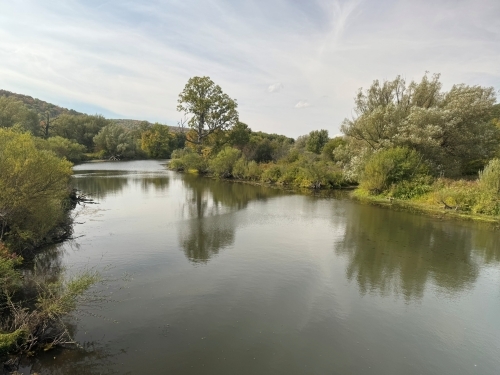The NYS DEC reports that “multimedia inspections” of the Ischua Creek disaster have been completed
A COLUMN By Clayton “Tiger” Hulin , Franklinville, NY
When the New York State Department of Environmental Conservation (DEC) announced that it had conducted “multimedia inspections” of the Great Lakes Cheese facility in Franklinville, the phrase sounded impressive, almost futuristic. It evoked the image of drones sweeping over tanks, sensors pinging data back to Albany, maybe even a live feed of the Ischua itself running clear and free.
But the truth, like the creek, runs a little muddier.
In environmental enforcement language, “multimedia” doesn’t mean multiple channels of observation. It doesn’t mean cameras, drones, or satellite imagery. It doesn’t even mean the public gets to see the footage, because there isn’t any.
“Multimedia” simply means multiple environmental media: air, water, and soil. It’s a holdover from the 1980s EPA vocabulary. A “multimedia inspection” is just a cross-departmental site visit, where air-quality, water-quality, and storage inspectors walk through the same facility at the same time.
That’s it. No video, no livestream, no public transparency.
And that’s the problem. The term reads like accountability but functions like opacity. It allows agencies to sound like they’ve launched a technological dragnet when all they’ve really done is fill out three clipboards instead of one.
In an age when a teenager can stream their life in 4K, you’d think environmental enforcement in New York would at least match that transparency. Instead, the language stays as analog as the tools.
If DEC had actually deployed multiple media routes of oversight—drone surveys, real-time telemetry of creek chemistry, or independent live water monitoring—they would have said so. The term for that would be “multi-platform assessment” or “integrated environmental monitoring.” But they didn’t. And they won’t, because “multimedia” sounds modern without the expense of actually being modern.
It’s the same kind of phrasing that turns “spill” into “discharge event” and “failure” into “incident.”
Language becomes the buffer between responsibility and public trust.
And so, while Great Lakes Cheese faces $475,000 in fines and a promise of “enhanced monitoring,” we’re still waiting to see what that monitoring looks like. Cameras? Sensors? Reports shared with the public? Or just more “multimedia inspections,” meaning the same inspections, in the same rooms, with the same pens?
The people of Franklinville don’t need more jargon; they need clarity. They deserve to know when a creek is healthy or when it’s hiding another secret beneath the foam.
Until DEC starts speaking in the language of the 21st century—data we can see, air we can breathe, water we can test—“multimedia inspection” will remain what it truly is: a bureaucratic mirage reflecting sunlight on a polluted stream.






